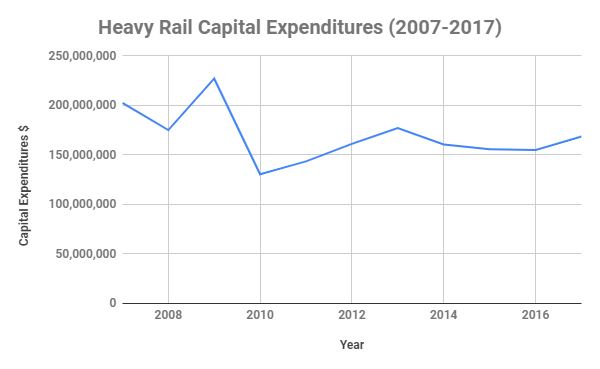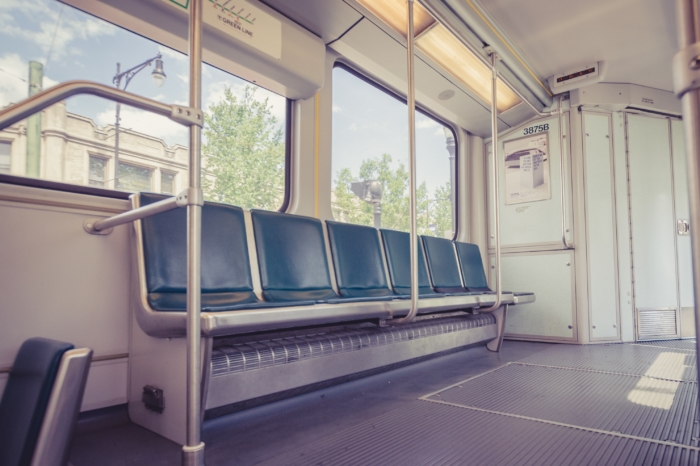MBTA’s Popular Heavy Rail System Lacking Expenditures
The MBTA’s heavy rail system is made up of the Red, Orange, and Blue lines and is a critical part of greater Boston’s public transportation network. In fact, given that about 57 percent of MBTA trips are on subways, heavy rail is crucial to countless individuals and companies in the Boston area.
According to Pioneer Institute’s MBTAAnalysis.com, from 2007 to 2017 unlinked passenger trips on the T grew by over 44 percent. In the same time period, the heavy rail system was the most popular of the T’s transit modes, chalking up 1.7 billion unlinked passenger trips, or nearly 60 million more than any other MBTA mode of transportation. In fact, the heavy rail system experienced a 14% growth between 2008-2012 and 2013-2017. Yet heavy rail capital expenditures did not keep up with the growth in ridership.
Capital expenditures on the heavy rail system actually decreased by 2.5% between 2008-2012 and 2013-2017. The lack of spending on the MBTA’s most popular transit mode is concerning. With the average commuter already waiting for approximately 15 minutes at their stop or station for a 49 minute commute, continuing heavy rail ridership growth may lead to longer wait times and commutes if capital expenditures do not increase. At some point the heavy rail system will have to be updated to accommodate growing ridership and maintain or improve efficiency.

Harris Foulkes is a Roger Perry Transparency Intern at Pioneer Institute and a rising sophomore at Amherst College studying Economics.



